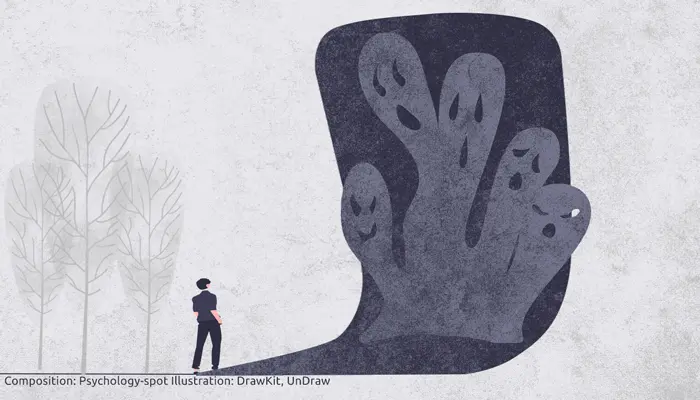
Anxiety is a state of uneasiness and worry, implying that we are waiting for something negative to happen. It is certainly not a pleasant state, but it is important to understand why anxiety is produced. In fact, this is a defensive mechanism, just like fear.
What is anxiety? Anxiety is a sensation that acts as a warning mechanism in front of those situations that we feel dangerous or threatening. This is a normal reaction we all feel and it would be worrying that it would not be activated in certain situations. Therefore, it is important to understand that anxiety in itself is not negative.
The functions of anxiety
– Protection. One of the functions of anxiety is to protect us from the dangers that threaten us. If something worries us, it immediately increases our level of attention, our senses intensify to allow us to better monitor the environment. The problem is when we become hypervigilant and scary, isolating ourselves from the world to avoid danger. In those cases the protective function of anxiety is exaggerated.
– Motivation. Anxiety is a powerful driving force of behavior. When we want to do something good and give the best of us, anxiety is triggered, bringing us an extra amount of energy to go ahead with our projects and get the most out of it. Once again, the problem begins when the level of anxiety is too high and makes us doubt about our abilities or drives us to perfectionism.
– Growth and development. Some degree of anxiety can stimulate personal growth. In fact, feeling a little generalized anxiety about what’s going on in our lives and worrying about the future, can encourage us to leave our comfort zone. Anxiety drives us to find out what we want to change, and then pushes us to do that. But sometimes anxiety puts down roots and we find ourselves trapped in a ruminant mechanism that, instead of pushing us to growth, blocks us.
What causes Anxiety?
Anxiety, as an adaptive mechanism, is positive and functional, and is not a problem. However, in some cases it does not work properly and anxiety disorder occurs, which can become very disabling and cause great discomfort, both psychologically and physically.
Predisposing factors
– Biological factors. It has been seen that having direct relatives suffering from an anxiety disorder increases the risk of suffering from this problem. In generalized anxiety, for example, it is estimated that one third of the risk of suffering from this disorder has a genetic component.
– Temperamental factors and personality. People who consistently inhibit their behaviors and those who have a tendency to neurosis maintaining a negative affectivity, have a greater risk of suffering from anxiety disorder.
– Environmental factors. Anxiety can also be established as a coping model learned in childhood. Some stress-stricken lifestyles cause the appearance of anxiety.
Triggering factors
– Situations beyond our psychological coping resources, such as the loss of a work or a beloved one.
– Events of vital importance requiring considerable effort to adapt, such as divorce or diagnosis of a serious illness.
– Obstacles that limit our ability to achieve our goals or maintain what we have already achieved.
Maintaining Factors
– Fear of anxiety. When we are anxious, especially when we are suffering from anxiety attacks or panic attacks, usually afterwards we’re afraid to experience once again these attacks. This fear of anxiety does nothing but aggravate it.
– Loss of faculties due to anxiety itself, which means that we have fewer resources to deal with problems or even appear new problems in areas that were not conflictual.
– Inadequate coping strategies that accentuate the problem and the sense of inability to solve it, and this generates great desperation.
Normally, there is no a single factor that can explain why anxiety occurs and retains in time, usually depends on a confluence of situations and forms of coping.
The mechanism through which anxiety is generated
In our daily lives, our brain constantly evaluates all the stimuli from the environment to analyze if some can be dangerous. In this mechanism, both areas related to basic emotions are involved, such as the amygdala and thalamus, as well as the cerebral cortex, which is responsible for giving a logical meaning to what we are experiencing.
Basically, this is what happens at the cerebral level:
First stage – Initial assessment of the threat. There is an automatic and fast recognition of the stimuli. In this way we can classify them as threatening or not.
Second stage – First activation in front of the threat. The cognitive, emotional, physiological and behavioral reactions typical of anxiety are put into motion. At this stage we act basically for instinct, so we can feel the need to escape from the place or hide. Appear also automatic thoughts about the situation that lead us to overestimate the damage and the probability that it will occur, in addition to experiencing a strong intolerance to uncertainty.
Third stage – Thoughtful thought. At this stage we are already able to think more or less clearly about these automated ideas and what we are feeling. The prefrontal cortex comes into action and assesses the real dimension of the threat, as well as the resources available to deal with it. Obviously, the information processing is a bit more complex and takes longer.
A problem in one of these phases can explain why anxiety is produced. For example, our risk recognition system can be hyperactive, which means it will also react to situations that do not represent a real risk. In fact, it is a common problem in our society and in the case of social anxiety, in which we perceive as risks many social situations that are completely innocuous.
It may also happen that we are trapped in the second stage, in this case ruminatory thoughts fit our minds and we only think of the worst consequences, and this keeps us stuck in anxiety.
Finally, it might be that we do not have the cognitive skills needed to deal with the situation precisely and combat anxiety, in which case those concerns that create the anxious state are maintained for a long time and could even appear major depression.
Sources:
APA (2014) Manual Diagnóstico y Estadístico de los Trastornos Mentales. Madrid: Editorial Médica Panamericana.
Matthews, A. (1990) Why worry? The cognitive function of anxiety. Behav Res Ther; 28(6): 455-468.



